Learning Mandarin
I've been taking a break from knitting and using the computer because of some numbness/pain in my hand/wrist/arm. I think not doing these activities has helped quite a bit. But boy am I way behind in blog reading! I've also got a hard lump inside my hand at the base of my 4th finger that is giving me some pain whenever I do anything that applies pressure to the area. If it's not one thing, it's another. Sometimes I really think I'm getting rickety and falling apart! My latest physical complaint is acute pain around my right hip when I move/bend/walk. I've got two doctors appts tomorrow, one about the lump in my hand and one follow up visit about the miscarriage.
Anyhow in this post, I'm rambling on about learning Mandarin. Scroll down further to skip to the knitting content...
I've decided to learn Mandarin. It's partly because my in-laws speak Mandarin, and I usually feel left out of conversations because I don't understand Mandarin. I don't blame them because I understand it is so much easier to fall back on one's native language when speaking. So I'd like to learn some Mandarin so I can better communicate with them, and it would be nice to teach Miss M some Mandarin too. Although I suspect she already knows a lot more Mandarin than I do just from her visits with the in-laws.
I'm picky about my language learning books. I just can't pick one of those "learn a language in 10 min a day / 1 week / 1 month" type books. There are some publishers/series I avoid in any language because I don't like the book size, binding, and content organization/presentation. And with Chinese language books, I do want somewhat proper pinyin english, not words spelled out the way you would pronounce them like you might find in a tourist phrase book (did that make sense?). If you saw my French language learning books (don't ask how much I've invested in that), they're not going to be the ubiquitous ones you can easily find at just any bookstore. My selection of Chinese books is probably similar. So the following is probably not the same set of books most beginner Chinese students would automatically flock to at first. Or perhaps the approach taken by the common choices just don't work well for me because I'm weird that way.
So far, these are my picks for beginner Chinese language books and resources. I'm sure I'll add to this list as I learn more Chinese.
 Pimsleur Chinese Mandarin, complete course in 3 volumes. It's completely audio and has no book. Thus I feel I need a good pinyin Chinese dictionary to supplement my studies here. If you want to learn Chinese characters while using Pimsleur, take a look at Taryn's Transcripts of the Pimsleur Chinese lessons.
Pimsleur Chinese Mandarin, complete course in 3 volumes. It's completely audio and has no book. Thus I feel I need a good pinyin Chinese dictionary to supplement my studies here. If you want to learn Chinese characters while using Pimsleur, take a look at Taryn's Transcripts of the Pimsleur Chinese lessons.The Pimsleur lessons are 30 minutes each, and I find I'm listening to them anywhere between 1 to 4 times before moving on to the next lesson. I'm only up to lesson 23 and feel like I've already picked up some useful phrases and vocabulary. It's slow going with a lot of repetition, but that is needed for language learning. It is helpful to hear the words spoken, something you can't get a good feel for from books alone. (However I must say I'm giving this a little break after I got overwhelmed by yizhi wang qian zou = to go straight ahead. That's quite a mouthful and my brain hasn't quite absorbed it all. Now I'm reading The Grave Tattoo by Val McDermid for a change of pace, and I've got The Torment of Others to follow this.)
I don't know how difficult most people find Chinese. I'd say it's only moderately difficult. However I think it might be a little easier for my because I do know a little bit of Cantonese and can make some correlations between the Cantonese and Mandarin words. I have a good understanding of Chinese grammar (having taken Cantonese classes in college didn't hurt either), so what looks like funky word order (to an English speaker) doesn't seem as strange to me. And it doesn't hurt that DH and his family speak Taiwanese Mandarin.
I've already discovered some differences between Mandarin spoken in Taiwan and Mandarin spoken in China. For example, in China they say pou-tung-hua (literally "common language") for "Mandarin" while in Taiwan they say guo-yu (which is similar to how we say it in Cantonese). I've already learned ee-dee-aar to mean "a little", while DH gave me a puzzled look when I said that to him, and he told me he said ee-dee-en. I'm learning nar for "where", DH says na-li. So there are some slight differences.
Anyhow, I know the prohibitive cost of the Pimsleur program may make it a less popular choice for people who are casually thinking about learning a language (and perhaps this is why I never see the "full" courses sold at bookstores, only the "short" courses if they have it on the shelf). Try your local library, you might get lucky and find all volumes of the full course of whatever language you are interested in.
 I also have this book, Beginning Chinese by John DeFrancis, which I am using concurrently with Pimsleur. I think it is one of the better Chinese language learning books out there. Don't let the fact that the author is not a Chinese dude turn you off from this book. Just get over the old-fashionedness of the book. It's not exactly one of those easy/fun modern reads, but the repetitions, presentation, and learning notes are efficacious.
I also have this book, Beginning Chinese by John DeFrancis, which I am using concurrently with Pimsleur. I think it is one of the better Chinese language learning books out there. Don't let the fact that the author is not a Chinese dude turn you off from this book. Just get over the old-fashionedness of the book. It's not exactly one of those easy/fun modern reads, but the repetitions, presentation, and learning notes are efficacious.I need some sort of book so that I can see the words I'm trying to say. Seeing the pinyin words in print helps me remember words and phrases. I can't describe how that works, but that's what I need to learn a language. I can't do it strictly through audio. The only tricky part is finding the time to sit down and read the book.
(Side note. Like the Pimsleur, this book also offers phrases that are different from what DH would say. Of course, there are different ways to say the same thing, this is also true in English. But here is an example from page 12 where it gives nin hui shuo yingguo hua bu hui? for "do you speak English?" DH thought this construction was awkward, he would have said, nin hui bu hui shuo yingguo hua? instead. The book does teach this same Positive-Negative construction as well as the Ma construction (ni hui shuo yingguo hua ma?). ----- Did I lose you in all that? To sum it up, Pimsleur teaches the 2 common constructions for asking a question and this book teaches these same 2 common constructions plus 1 uncommon construction.)
Now I need a good pinyin dictionary and am considering these as portable options. I'm looking for a pinyin dictionary, not a Chinese character dictionary.
The Oxford Beginner's and Tuttle Learner's are very basic, but they are perfect for me at this early stage of learning. I like how example usages of a word are given in pinyin, so I can look up the words in the example sentences. The Harper Collins (and the regular Oxford) versions give example sentences in Chinese characters only, no pinyin, so they would only be helpful to me later on after I've learned how to read the characters. The cultural/usage notes in the Tuttle Learner's are great for the beginner; the Oxford Beginner's also has some notes too. I already have the Oxford Beginner's and Tuttle Learner's. My next two portable dictionary purchases will be the Harper Collins and the regular Oxford. That may sound excessive, but you really can't have too many dictionaries. Just ask me how many English dictionaries and French dictionaries I have! :-D
 Collins Chinese Concise Dictionary. This is Chinese-English and English-Chinese.
Collins Chinese Concise Dictionary. This is Chinese-English and English-Chinese. Oxford's Beginner's Chinese Dictionary. This is Chinese-English and English-Chinese.
Oxford's Beginner's Chinese Dictionary. This is Chinese-English and English-Chinese. Tuttle Learner's Chinese Dictionary, which is Chinese-English only (which is why I also needed another dictionary that offered English-Chinese).
Tuttle Learner's Chinese Dictionary, which is Chinese-English only (which is why I also needed another dictionary that offered English-Chinese).I would like to learn the Chinese characters after getting some basics down and learning how to speak the language. I know some people want to do all this together. I think it would be easier for me to tackle them separately.
I've already got some books in mind for learning how to read and write Chinese characters:
 Beginning Chinese Reader Part I by John DeFrancis. I already have this, I just haven't had any time to sit down with it. There's only so much I can tackle at one time. (I already have Beginning Chinese by John DeFrancis.)
Beginning Chinese Reader Part I by John DeFrancis. I already have this, I just haven't had any time to sit down with it. There's only so much I can tackle at one time. (I already have Beginning Chinese by John DeFrancis.) Reading and Writing Chinese (traditional characters version) by William McNaughton. I want to learn traditional characters because that's what my Mom learned in Hong Kong and what my MIL knows. Besides, I figure it's easier to learn the simplified characters after learning the traditional ones, but not so easy the other way around.
Reading and Writing Chinese (traditional characters version) by William McNaughton. I want to learn traditional characters because that's what my Mom learned in Hong Kong and what my MIL knows. Besides, I figure it's easier to learn the simplified characters after learning the traditional ones, but not so easy the other way around. Tuttle Learning Chinese Characters, which would add a bit of "fun" to the mix.
Tuttle Learning Chinese Characters, which would add a bit of "fun" to the mix. Chinese Character Fast Finder. I would also like to add this book, which I've looked at and and tried out with a few Chinese words. It lives up to its name and really does help you look up Chinese characters fast!
Chinese Character Fast Finder. I would also like to add this book, which I've looked at and and tried out with a few Chinese words. It lives up to its name and really does help you look up Chinese characters fast!When I get more advanced, I'd like to add these to my library:
 ABC Chinese-English Comprehensive Dictionary by John DeFrancis. Although I can probably get this now, it's just that it is an expensive book!
ABC Chinese-English Comprehensive Dictionary by John DeFrancis. Although I can probably get this now, it's just that it is an expensive book! Chinese Characters: A Genealogy and Dictionary by Rick Harbaugh (note you can get the contents of this book online here)
Chinese Characters: A Genealogy and Dictionary by Rick Harbaugh (note you can get the contents of this book online here) Chinese: A Comprehensive Grammar by Yip Po-Ching. I'm expecting this book to be just as good as the Steven Matthews / Virginia Yip series of Cantonese language books, like Cantonese: A Comprehensive Grammar. Actually, I'd recommend any of Virginia Yip's books on Cantonese, they're excellent.
Chinese: A Comprehensive Grammar by Yip Po-Ching. I'm expecting this book to be just as good as the Steven Matthews / Virginia Yip series of Cantonese language books, like Cantonese: A Comprehensive Grammar. Actually, I'd recommend any of Virginia Yip's books on Cantonese, they're excellent.I'd love to hear your tips for learning Chinese.
OK, there is a bit of knitting content in this post. :-)
Yay, I finally finished the Left Front section of my mom's vest, using the plan I outlined in this post. I went ahead and worked it that way, with the 10 decreases instead of the 11 decreases specified in the pattern. I think/hope it will work out OK in the end.
Now how many months will it take me to start and finish the Right Front section of this vest?
I'm also working on a scarf for my MIL. I have no photo of it and am not inclined to take one until it is done because it is red and I always have such a hard time getting red colored knitting to look good in photos. It's just the Regina Scarf, knit in the same yarn in red. So just imagine that pink scarf in red.
I frogged this green cloth because I didn't have enough yarn to knit the top border, and the yarn reincarnated itself into this smaller cloth:
It was a remnant ball of yarn, not a full ball. I knew there would be enough yarn because this is a smaller cloth. I think most people would prefer a slightly larger cloth, another repeat of rows 1-12 would make it taller. Casting on 46 stitches would make a wider cloth. In retrospect, I think I should have made the top border "knit 4 rows" instead of 5 rows. But this was one of my earlier attempts at a dishcloth and I guess it really sucked cuz I don't think I've ever seen anybody attempt to knit it. LOL. The cloth above shows a 4-stitch wide garter border; the original pattern has a 3-stitch wide garter border. No clue why I did that for this cloth.
Nope, I don't use my dishcloths as dishcloths. I'm a sponge gal when it comes to washing dishes. However I use these cloths everywhere else around the house. I was thinking back on how I started to use them as mug coasters on the kitchen counter. I think it was back when Miss M was very young. I would often hold her while she is drowsy or sleepy, and I didn't want the sound of setting a cup down to wake her. So I'd place the mug on a dishcloth, nice and quiet, doesn't wake sleeping baby. Cuz Rule #1 is to never wake a sleeping baby!!! I put my teapot on a dishcloth for the same reason. This is why most of my dishcloths have permanent tea stains on them.
My latest thing, since I have lots of blinds and shutters in our new house, is to use the cloths with a lot of texture for cleaning window blinds and shutters. Used slightly damp, they work great for picking up the dust!
This is a photo of how much yarn was left over when I finished this cloth. It is definitely not enough to do another repeat of 12 rows. This is a smallish cloth, about 23 cm wide and 18 cm tall (~9 in x 7 in). All my cloths shrink in the wash. Does this happen to everyone else too? Anyhow, this will be the perfect small cloth after washing, I'll use it as a mug or teapot coaster. I guess that sounds weird to use it as a mug coaster, but you need to know that I use large mugs with a 9.5 cm diameter (~ 3.75 in). Those small coasters made for "standard" size mugs are just too small.
Yarn: Lily Sugar & Cream, Hot Orange color, 1 ball
Needles: 4.5 mm (US7)
I think anyone with kids will immediately identify this as Elmo from Sesame Street. Elmo is one of Miss M's favorite characters. I didn't have any red yarn, so I grabbed a ball of orange instead. You'd think that in this day and age, someone who owns a computer would also own a printer. Well, that's not me. I have a computer, but no printer. So I worked on this cloth with the laptop on the coffee table and my web browser open to the pattern page so that I could knit up this cloth. In some ways it made it easier in that I could use the mouse to highlight the line I'm working on.
I made two of these cloths using the same wine colored kitchen cotton yarn. The only change I made was to work 4 rows of garter stitch for the top border instead of 5 rows. Now that I'm looking at this photo, I realize that I should have put the other cloth on top because that one was knitted more tightly which made the crossed stitches look better. Knitting too loosely is one of my problems.
.





































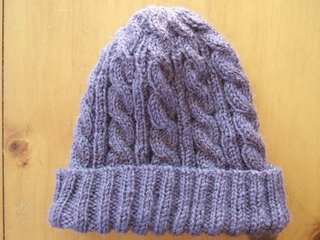











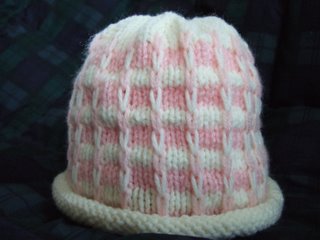




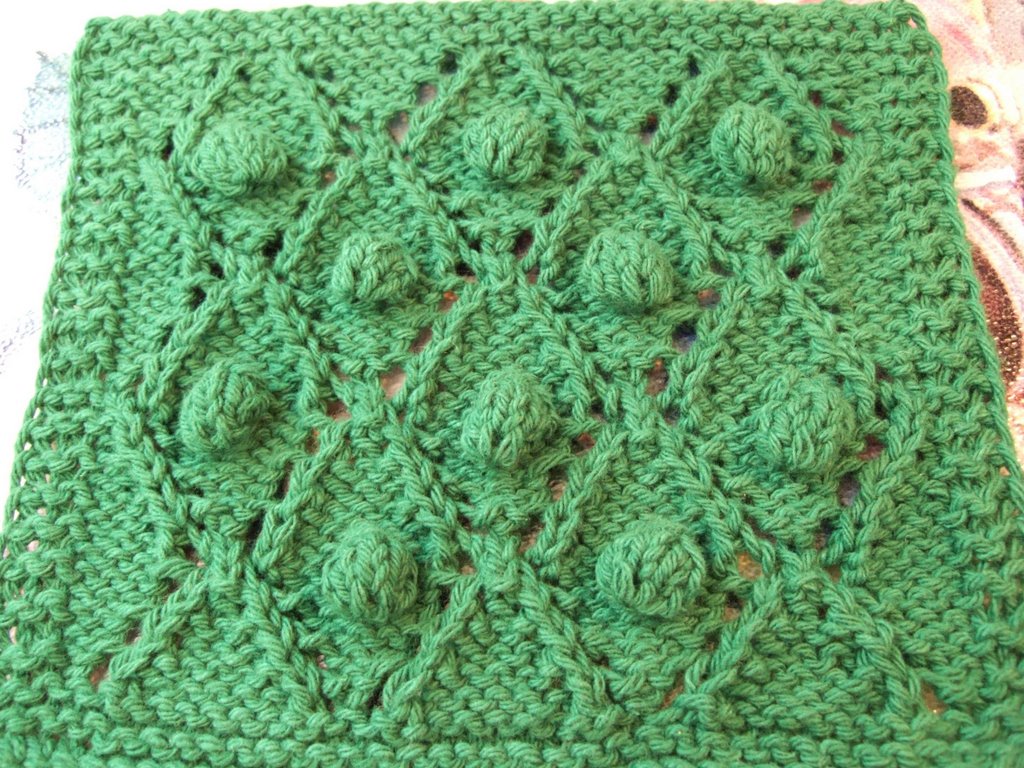


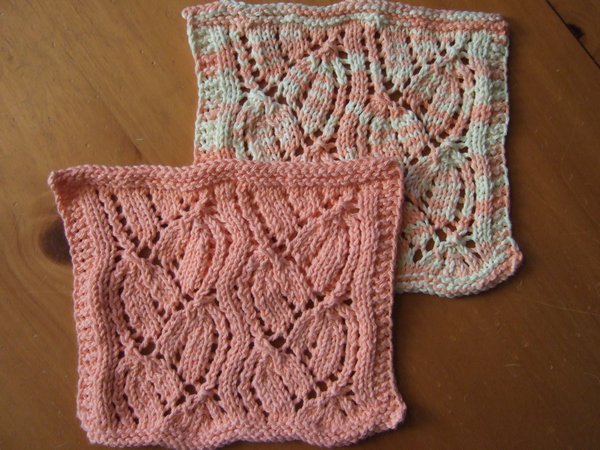






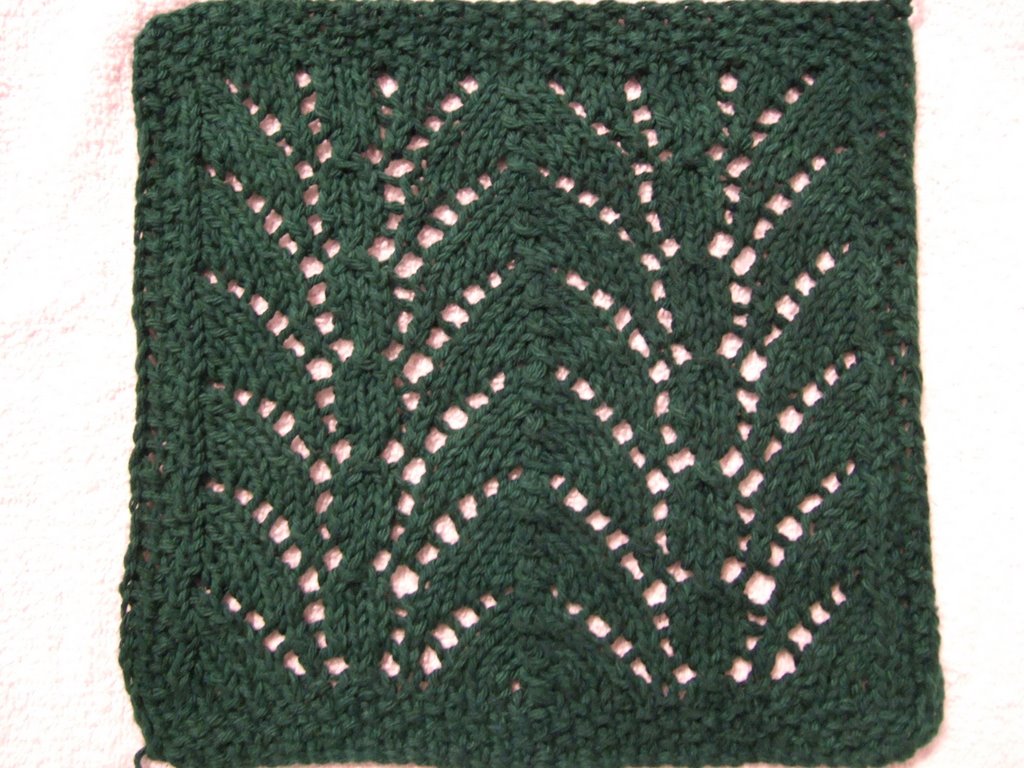


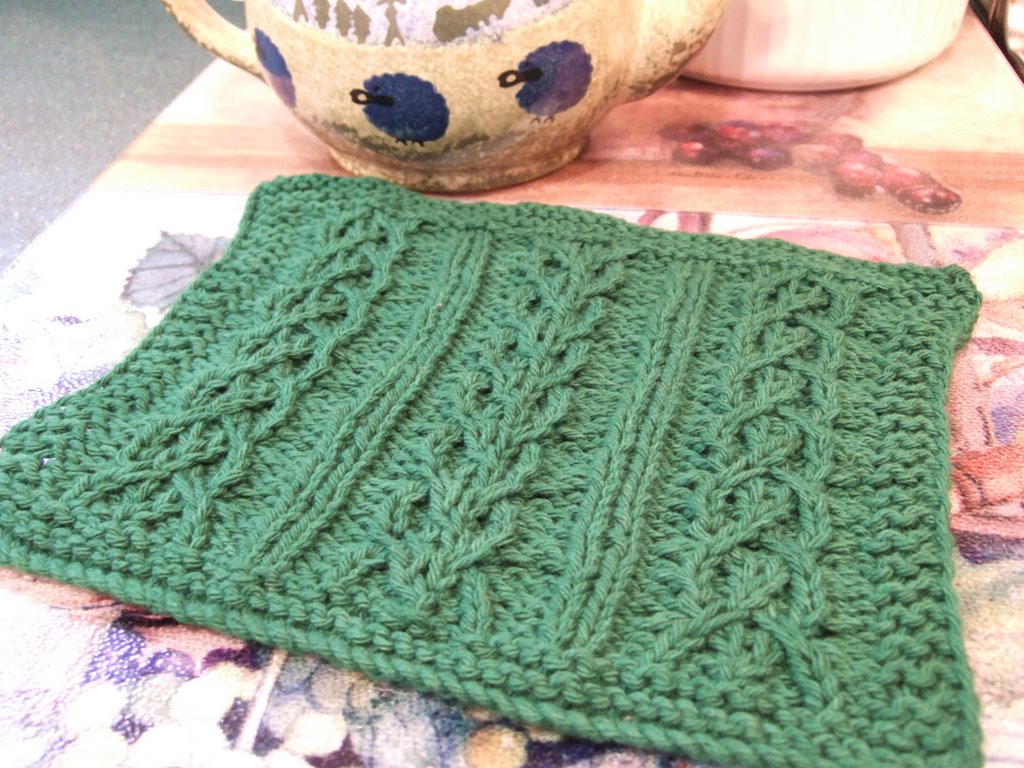

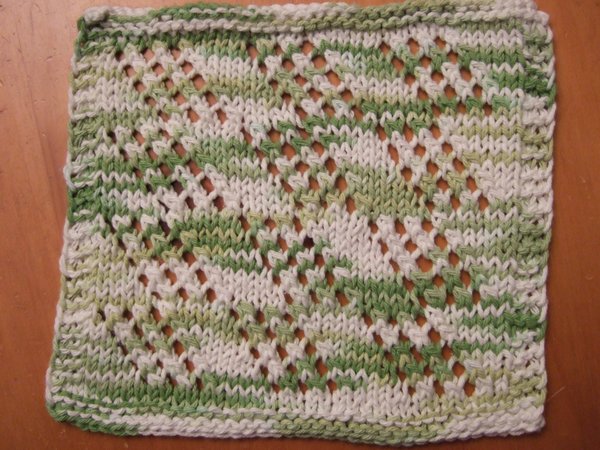





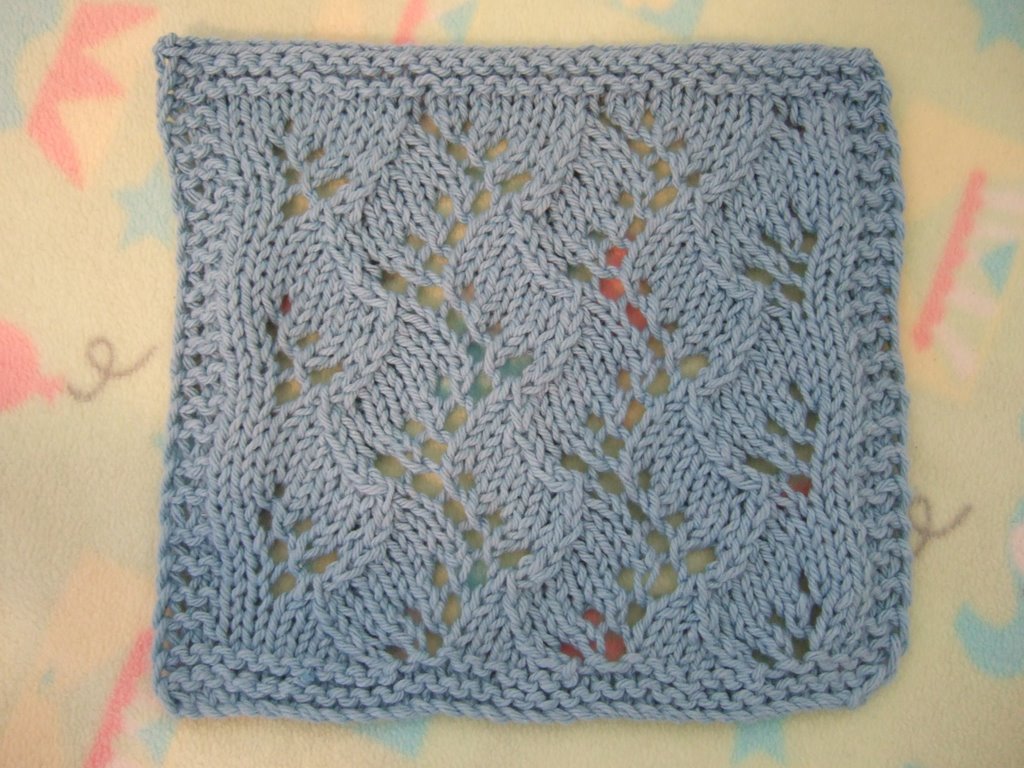

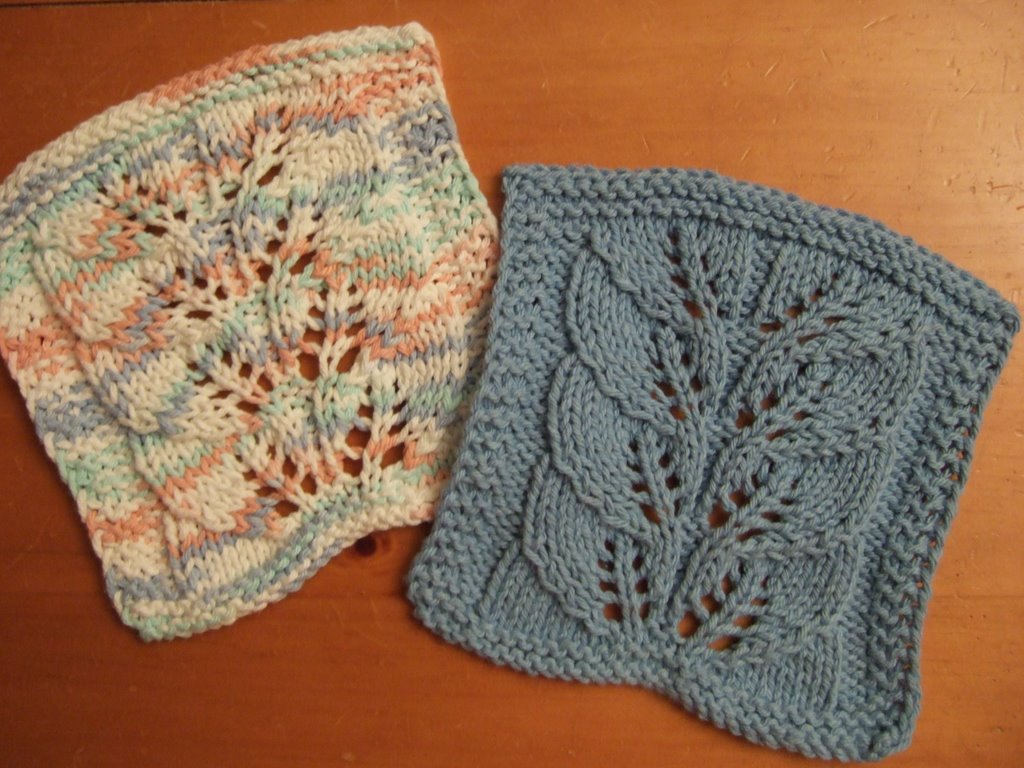
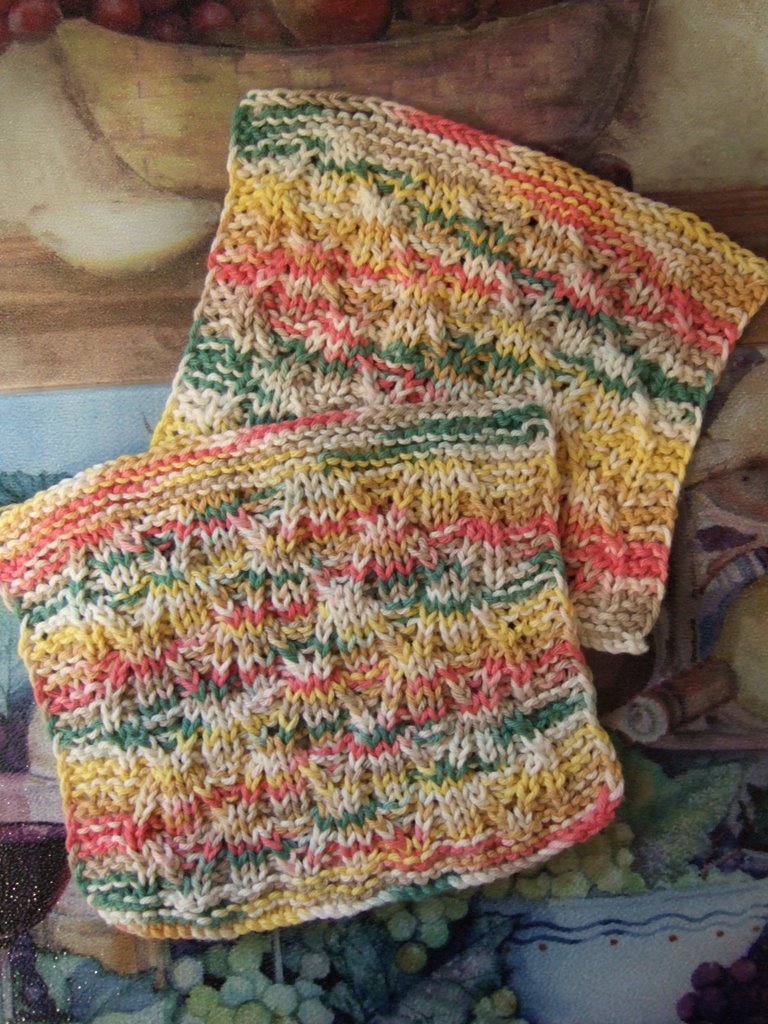

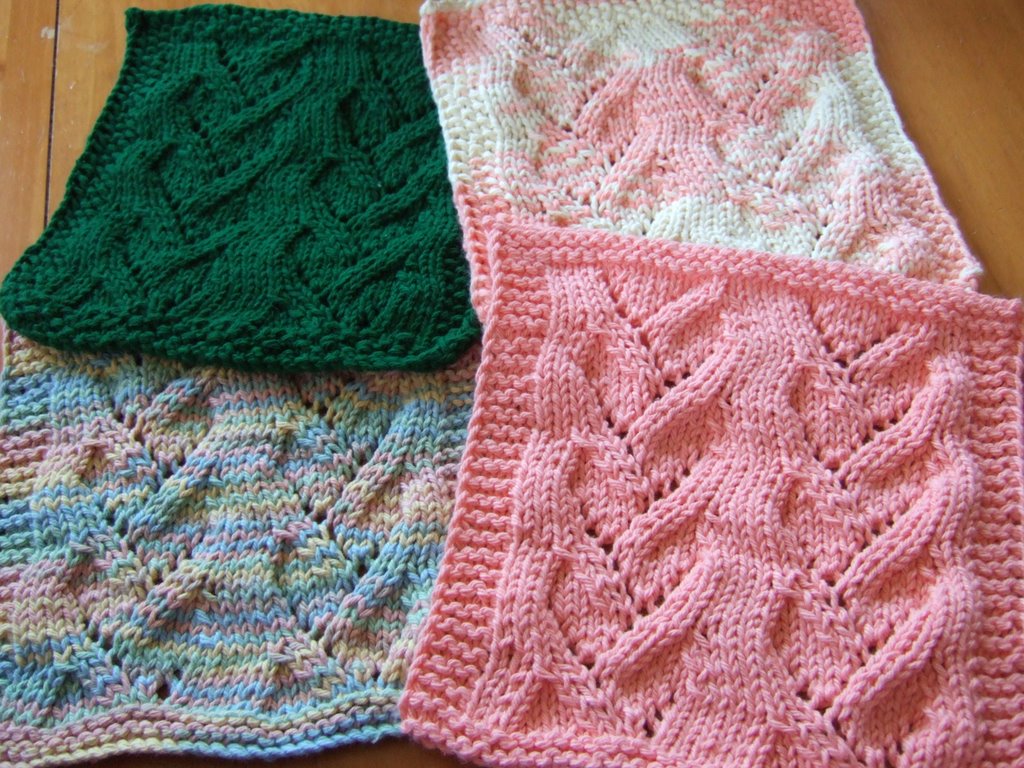
















4 stitch(es):
Just FYI, you can also buy Pimsleur in 5 lesson sets from audible (not sure if it's all their languages though). I don't know how the total cost compares to the full version, but it feels more affordable at least :) We've been using them to learn a little Japanese before a trip.
I LOVE the new scarf!! You are so productive. I'm thinking maybe I should give up sewing so I can do more knitting!
Hi , just checking out u start to learn mandarin . I would like to suggest you the website : www.ecpod.com to have more tips and learning materials related to mandarin . Good luck
Has anyone saved Taryns transcript and can send it to me? Her site is down and I cannot find it anywhere else.
If you have it, please, please send it to me at Adolf.Kappl@gmx.net
Post a Comment